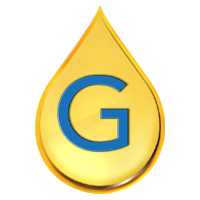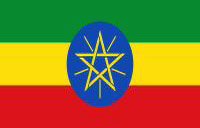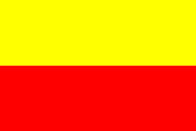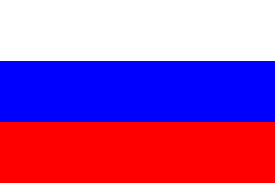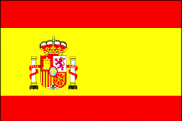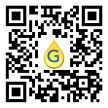
Jean-Marie Lehn Ph.D.
The Nobel Prize in Chemistry 1987
Nobel co-recepients Donald J. Cram, Charles J. Pedersen
Chemist. Interests: Supramolecular chemistry, Self-assembly and self-organization, Constitutional dynamic chemistry; Music, Philosophy.
Founding director, 'Chemistry, a European Journal'. Gave starting impetus to other European journals, rare manifestation of European spirit and supranationality bridging historical divides!
President, International Organization for Chemical Sciences in Development, helping chemists in developing countries.
Autobiography
Biography
Generously contributed by Jean-Marie Lehn
Jean-Marie LEHN was born in Rosheim, France in 1939. He received his bachelor's degree in Chemistry from the University of Strasbourg in 1960. There he also did research towards his doctorate with Guy Ourisson for three years, earning his Ph.D. in 1963. The following year he worked in the laboratory of Robert Burns Woodward at Harvard, where he participated in the total synthesis of vitamin B12. On his return to Strasbourg he began to work in areas at the interface between organic and physical chemistry, later taking an interest in biological processes as well.
In 1968, his research led to the fabrication of cage-like molecules that contain a cavity into which another chemical species of appropriate size and shape may be included, to form a "cryptate", like a key fits into a lock. With this began his work on the chemical basis of "molecular recognition" (i.e. the way in which a receptor molecule recognizes and selectively binds a substrate), which also plays a fundamental role in biological processes. For these studies Lehn received the Nobel Prize in Chemistry in 1987 with D.J. Cram and C.J. Pedersen.
From 1970, Lehn has been Professor of Chemistry at the Université Louis Pasteur in Strasbourg and in 1979 he was elected to the chair of Chemistry of Molecular Interactions at the Collège de France in Paris. He retired from the Collège de France in 2010 and is presently Professor Emeritus at the University of Strasbourg and Professor at the University of Strasbourg Institute for Advanced Study (USIAS), where he directs the Laboratory of Supramolecular Chemistry at the ISIS (Institut de Science et d'Ingénierie Supramoléculaires).
Over the years his work led to the definition of a new field of chemistry, which he has named "supramolecular chemistry" as it deals with the complex entities formed by the association of two or more chemical species held together by intermolecular forces, whereas molecular chemistry studies the features of the entities constructed from atoms linked by covalent bonds. His research broadened from molecular recognition towards supramolecular catalysis and transport processes. It also extended to the elaboration of functional devices, for supramolecular photonics, electronics and ionics.
Thereafter, the main line of development concerned the chemistry of "self-organization" based on the design of "programmed" systems that undergo spontaneous assembly of suitable components into well-defined functional supramolecular architectures, directed by the supramolecular processing of molecular information. More recently, importing into molecular chemistry, the dynamic features characteristic of supramolecular chemistry, through the introduction of reversible covalent bonds, allowed the implementation of selection in addition to design in self-organization processes. It led to the definition and development of "constitutional dynamic chemistry", whose molecular or supramolecular entities are able to undergo reorganization in response to external stimuli. It points to the emergence of an "adaptive chemistry", that involves dynamic networks linking chemical entities, thus opening towards the chemistry of complex systems.
On another line, over the last ten years, a substance has been discovered that is able to markedly increase oxygen delivery to hypoxic tissues in vivo as well as to act on important biological signalling factors. Work has been actively pursued with Professor Claude Nicolau on its biological effects and potential therapeutic relevance in the numerous diseases (cancer, cardiovascular, etc…) characterized by hypoxia and dependent on specific signalling pathways.
Author of more than 900 scientific publications, Lehn is a member of many academies and institutions and has received numerous international honours and awards.
Bibliography (by J.-M. Lehn as sole author)
Articles
- Nitrogen inversion: experiment and theory, in Fortschritte der chemischen Forschung, 1970, 311, Springer-Verlag.Theoretical conformational analysis: ab initio SCF-LCAO-MO studies of conformations and conformational energy barriers. Scope and limitations, in IUPAC Symposium on Conformational Analysis , Bruxelles, 1969, Academic Press, 1971, p.129.
- Design of organic complexing agents. Strategies towards properties, Structure and Bonding, 1973, 16, 1.
- Cryptates: the chemistry of macropolycyclic inclusion complexes, Acc. Chem. Res., 1978, 11, 49.
- Macrocyclic receptor molecules: Aspects of chemical reactivity. Investigations into molecular catalysis and transport processes, Pure & Appl. Chem., 1979, 51, 979.
- Artificial photosynthesis and solar energy conversion. Catalytic photochemical water splitting and carbon dioxide reduction, Proceedings of the 8th International Congress on Catalysis, Berlin (West) 2-6, July 1984, Vol. 1, Verlag Chemie, Weinheim, 1984.
- Supramolecular chemistry - Scope and perspectives. Molecules, supermolecules, and molecular devices, (Nobel Lecture, 8.12.1987), Angew. Chem. Int. Ed. Engl., 1988, 27, 89
- Perspectives in supramolecular chemistry - From molecular recognition towards molecular information processing and self-organization, Angew. Chem. Int. Ed. Engl., 1990, 29, 1304.
- Dynamic combinatorial chemistry and virtual combinatorial libraries, Chem. Eur. J., 1999, 5, 2455.
- Programmed chemical systems : Multiple subprograms and multiple processing/expression of molecular information, Chem. Eur. J., 2000, 6, 2097.Toward complex matter: Supramolecular chemistry and self-organization, Proc. Natl. Acad. Sci. USA, 2002, 99, 4763.
- Toward self-organization and complex matter, Science, 2002, 295, 2400.
- Dynamers : Dynamic molecular and supramolecular polymers, Prog. Polym. Sci., 2005, 30, 814.
- From supramolecular chemistry towards constitutional dynamic chemistry and adaptive chemistry, Chem. Soc. Rev., 2007, 36, 151.
Discover Your Abilities and Aspirations!
 $10 $25 $50 $100 Other
$10 $25 $50 $100 Other
Tax Exempt 501(c)3 Non-Profit Organization
Any Currency
“…the peace that is found in libraries and laboratories…” - Louis Pasteur
Copyright © 2023 Ganga Library Inc. All Rights reserved.;
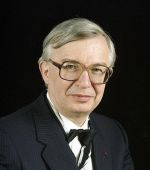
Photo German Federal Archives, Wiki.
Name: Jean-Marie Pierre Lehn
Birth: 30 Sept. 1939, Rosheim, France
Institution: Université Louis Pasteur, Strasbourg, France, Collège de France, Paris, France
Award: Development and use of molecules with structure-specific interactions of high selectivity
Subject: Biochemistry, Endocrinology, Metabolism
Portion of cash: 1/3
Biography
Vita
Publications
Books
Patents
External Resources/Videos
